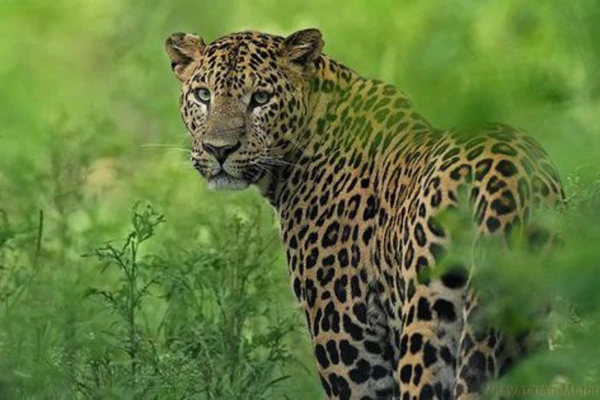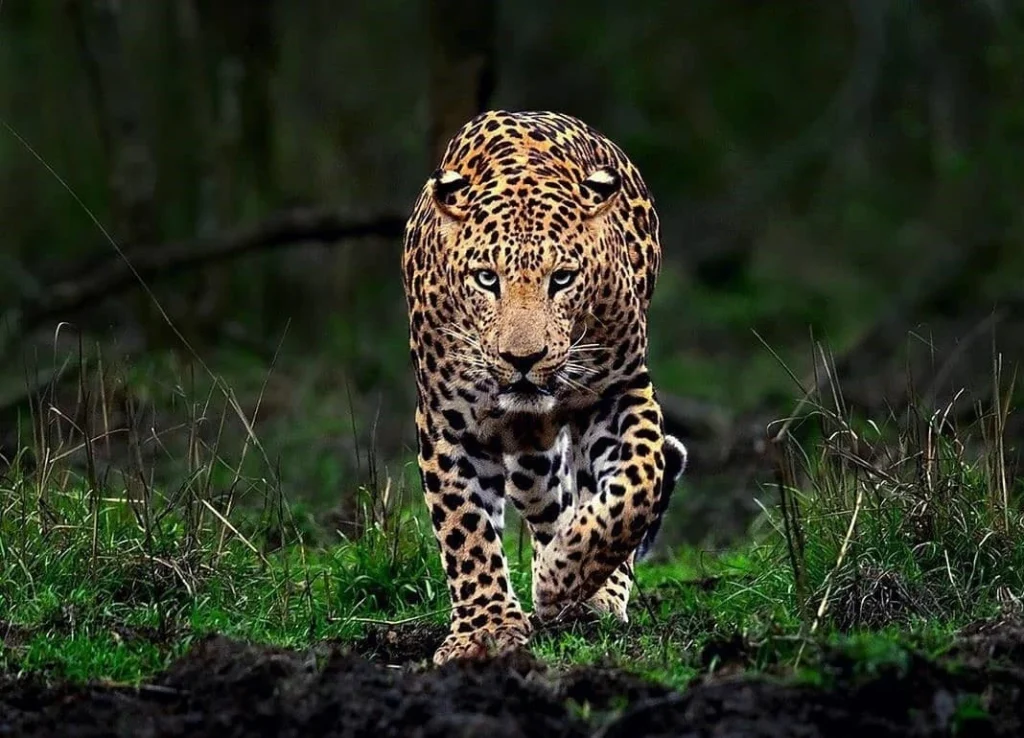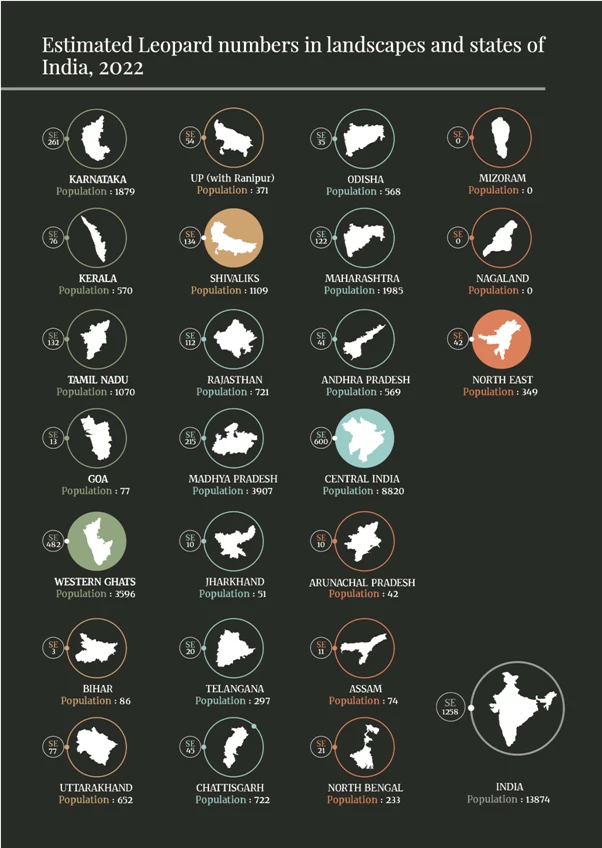The Union Environment Ministry released the ‘Status of Leopards in India, 2022’ report recently, revealing crucial insights into the leopard population across the country.
About the report:
- The National Tiger Conservation Authority, Wildlife Institute of India, and State Forest Departments collaborated on the fifth cycle leopard population estimation.
- This quadrennial exercise, known as the “Monitoring of Tiger, Co-predators, prey and their habitat,” is vital for the country’s conservation efforts.
- The fifth cycle of leopard population estimation (2022) focused on forested habitats within 18 tiger states, covering four major tiger conservation landscapes.
- Non-forested habitats, arid, and high Himalayas above 2000 mean seas level were not sampled.
Key highlights of the report:
Marginal Increase in Overall Leopard Population:
- The report indicates a marginal increase in the overall leopard population, with an estimated 13,874 leopards in India, up from 12,852 in 2018.
Geographical Distribution:
- Central India and Eastern Ghats boast the highest leopard population (8,820), followed by the Western Ghats (3,596), and the Shivalik Hills and Gangetic Plains (1,109).
- Statewise, Madhya Pradesh leads with 3,907 leopards, followed by Maharashtra (1,985), Karnataka (1,879), and Tamil Nadu (1,070).
- Tiger Reserves with the highest leopard population are Nagarajunasagar Srisailam (Andhra Pradesh), Panna (Madhya Pradesh), and Satpura (Madhya Pradesh).
Decrease in Population in Some Regions:
- The Shivalik Hills and Gangetic Plains recorded a worrying 3.4% per annum decline, from 1,253 in 2018 to 1,109 in 2022.
- Some states reported a decline in leopard population, including Odisha, Uttarakhand, Kerala, Telangana, Chhattisgarh, Bihar, and Goa.
Factors Behind Decline:
- Increased tiger populations, poaching, habitat loss, and road accidents contribute to the decline in leopard populations.
- In Uttarakhand, increased tiger density is linked to a significant decline in leopard population in the Ramnagar Forest Division.
- Tiger population has been known to adversely impact the habitat and resources available to leopards and other creatures lower down the predator chain.
Benefits from Tiger Conservation Efforts:
- Tiger conservation efforts positively impact leopard populations, especially in the Central India and Eastern Ghats landscape.
- Protective measures under tiger conservation contribute to the growth of leopard populations.
Leopard-Human Conflict:
- Leopard adaptability in various habitats leads to increasing leopard-human conflicts.
- In the Shivalik region, approximately 65% of the leopard population is outside protected areas, contributing to conflicts.
- Maharashtra reported 113 fatal attacks in the last seven years, and Karnataka reported over 100 human-leopard encounters, largely due to habitat loss.
Leopard-Human Conflict by States:
- In Kerala, from 2013 to 2019, there were 547 reported incidents of human-leopard conflict, including 173 livestock deaths or injuries.
- In Uttar Pradesh, conflicts often occur in areas less than 10 km wide, with attacks recorded in homes, agricultural fields, and farmlands.
- In Tamil Nadu, commercial plantations near forests are occupied by leopards, leading to conflicts.
Key Concerns and Conservation Strategies:
- The report highlights the challenges posed by habitat loss, mining, and human activities.
- Conservation efforts, especially under tiger conservation, play a vital role in managing leopard populations.
- Balancing human activities and preserving natural habitats are crucial for mitigating leopard-human conflicts.
About Indian leopards:
- The leopard ( Panthera pardus ) is the smallest species of the genus Panthera .
- There are nine subspecies of leopard in the world, and India supports the largest population of a subspecies (the Indian subspecies is P. pardus fusca ) outside Africa.
- Indian leopards (Panthera pardus fusca) are distributed across a variety of forested habitats in India, Nepal, Bhutan, and parts of Pakistan (Indian subcontinent).
- Like lions (Panthera leo), leopards came to India from the west, most likely Ethiopia.
- Indian leopards are apex predators crucial for maintaining a balanced ecosystem.
- Diet: Opportunistic predator, feeding on a variety of prey including mammals, birds, and reptiles.
- Habitat: It inhabits tropical rainforests, dry deciduous forests, temperate forests and northern coniferous forests but does not occur in the mangrove forests of the Sundarbans.
- Adaptable in both food habits and habitats, the leopard thrives in various ecological settings, making it widespread in both forested and populated areas.
Characteristics:
- The Indian leopard has strong legs and a long, well-formed tail, broad muzzle, short ears, small, yellowish-grey eyes, and light-grey ocular bulbs.
- Its coat is spotted and rosetted on a pale yellow to yellowish-brown or golden background, except for the melanistic forms; the spots fade toward the white underbelly and the insides and lower parts of the legs.
- Indian leopards have larger rosettes than other subspecies.
- Their coat color varies by habitat, with a paler coat in desert habitats, a greyer coat in colder climates, and a more ochre coat in rainforest habitats.
- They are expert tree climbers that can carry their prey to safety in trees to eat at their leisure.
Conservation status:
- Wildlife (Protection) Act: Leopard listed under Schedule I.
- IUCN Red Data list: vulnerable.
- Convention on International Trade in Endangered Species of Wild Fauna and Flora (CITES): Appendix.
Ref:Source
| UPSC IAS Preparation Resources | |
| Current Affairs Analysis | Topperspedia |
| GS Shots | Simply Explained |
| Daily Flash Cards | Daily Quiz |




